Many people wish to incorporate one or more elements of a traditional Jewish Wedding into their ceremonies. Here are some of the rituals and what they mean. While these descriptions refer to the bride and groom, all of these are easily adaptable to same-sex marriages. In addition, although Hebrew is a gendered language, we can use language from the Nonbinary Hebrew Project to make the Hebrew gender-neutral if you prefer.
The Aufruf (The Calling): The Aufruf is held on the Shabbat prior to the wedding. The name refers to the calling up of a couple to recite the blessings before and after the Torah reading. This also serves as a public announcement of the marriage. The Torah is comprised of the first five books of the Hebrew bible (Genesis, Exodus, Leviticus, Numbers, Deuteronomy), portions of which are read every Shabbat. Traditionally, a reading of the entire Torah is completed each year.
Hachnassat Kallah (Attending the Bride): Prior to the ceremony, the bridesmaids and female family members and friends gather to help the bride prepare for the wedding ceremony. Traditionally, she may not do any work, but is waited on by the other women, who provide for her anything that she might need for her wedding. Every bride is a queen; this tradition is meant to make her feel happy on her special day. In the case of two brides, each could have their own gatherings.
Groom’s Tisch (Groom’s Table): This is a similar custom for the Groom, at which traditionally the Groom tries to engage in study with his male family and friends but is interrupted with singing and clapping. The Tisch finishes with the Groom accepting the requirements and obligations outlined in the ketubah, although for most modern weddings, this is done together at the ketubah signing. In the case of two grooms, each could host his own tisch.
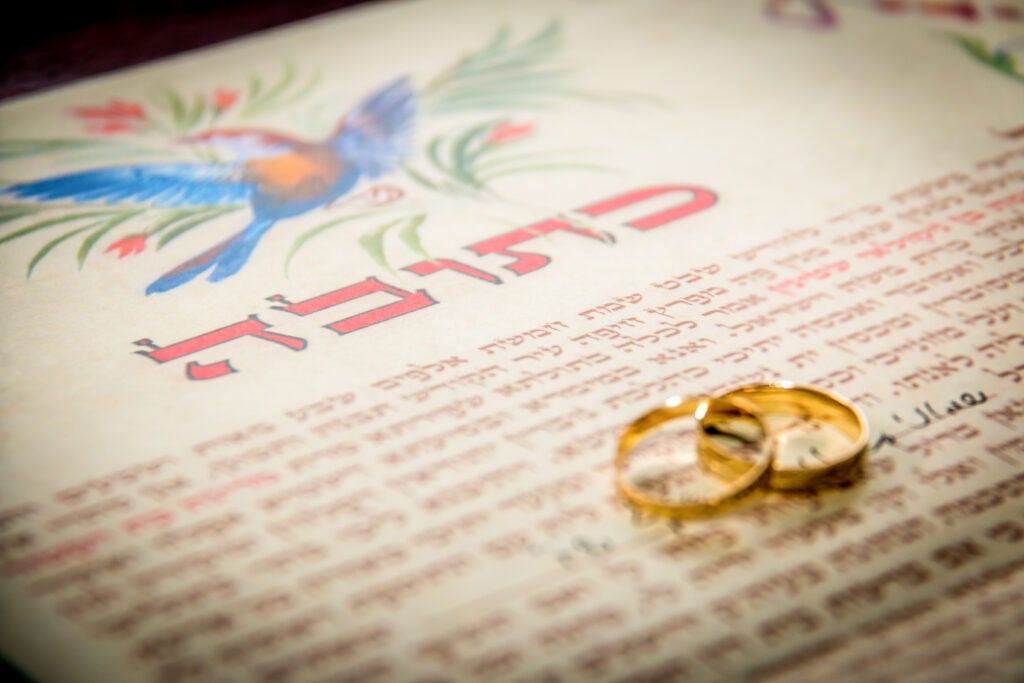
The Ketubah Signing: The ketubah is the Jewish marriage contract, which describes the obligations of the groom in the marriage. Many ketubot are magnificent works of art, with colorful drawings depicting many meanings on the handwritten parchment The ketubah is usually signed and witnessed in a small, private ceremony just a few minutes prior to the chuppah ceremony, and the marriage license is signed and witnessed at the same time.
The B’deken Ceremony: B’deken is the ritual veiling of the bride by the groom. This custom developed from the biblical story of Jacob, who married Leah by mistake, instead of Rachel, the woman he loved. Prior to the chuppah ceremony, the groom is joyfully escorted to the bride with singing and dancing. When he reaches the bride, he lowers her veil over her face, having first made sure that she is his intended. By doing this, the groom sets her apart from all others.
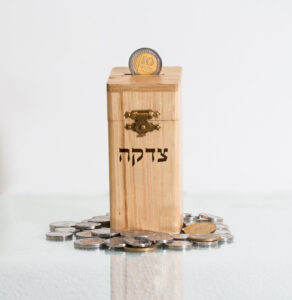
Tzedakah: Tzedakah (charity) is the obligatory Jewish requirement of righteous giving and just behavior that ensures the basic well-being of fellow human beings. It is customary for the couple to give a large amount of tzedakah on their wedding day.
Fasting: It is customary for the couple to fast on the day of their wedding. This is because their wedding day is like a Day of Atonement, in which they leave their old lives behind and begin one together. They will break the fast during Yichud (explained below).
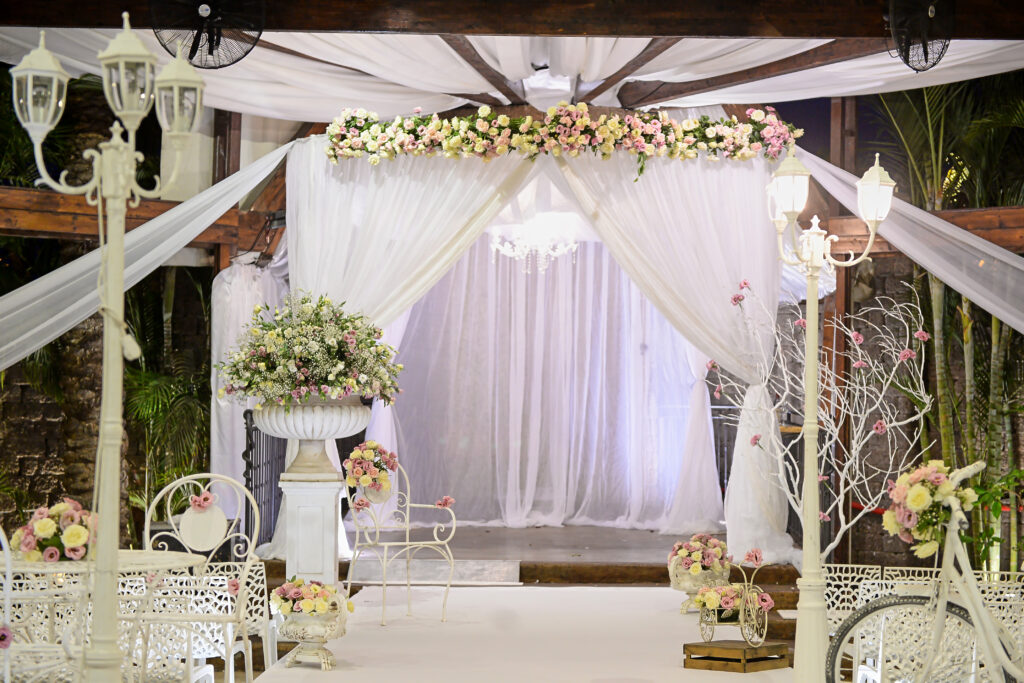
The Chuppah: A Jewish wedding ceremony takes place under a chuppah, or wedding canopy, that represents the home to be built and shared by the couple, without walls so that all visitors feel welcome. It is also a sign of God’s presence at the wedding and in the couple’s home.
The Processional: Shoshvinim (escorts) bring the bride and groom to their chuppah. The procession begins with the groom’s attendants (often groomsmen, best man and ring bearer(s)). The groom then walks down the aisle, escorted by his parents. The bride’s attendants then enter (usually bridesmaids, Maid and/or Matron of Honor and flower girl(s)). Finally, the bride is escorted to the chuppah by her parents.
Kippot: Kippot (yarmulkes in Yiddish) are head coverings worn by men as a sign of respect for God. Men present at the wedding will often be requested or offered to wear them. In many synagogues, women are welcome to wear them, too.
Circling the Groom: When the bride reaches the chuppah, she circles around the groom seven times. This symbolizes her entrance into the seven spheres of her groom’s soul and the light that envelopes a man as he emerges from bachelorhood. By doing this, she also creates a protective wall around her husband, guarding him from harmful influences. This tradition is easily adaptable to have both people circle around each other.
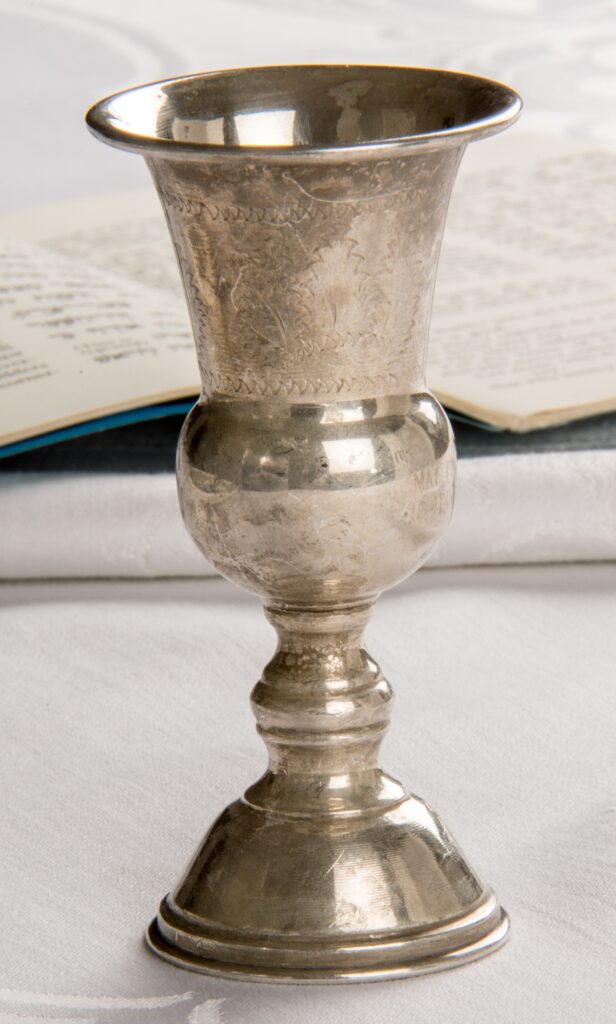
Erusin and Kiddushin: The first part of the ceremony is the Erusin and Kiddushin (betrothal). It is accompanied by two blessings. The first blessing is over a cup of wine (or grape juice) to symbolize the joy and happiness of this day. The second proclaims the holiness of the marriage. The bride and groom will both drink from the kiddush (holy) cup. These blessings are followed by personal vows and the exchange of rings.
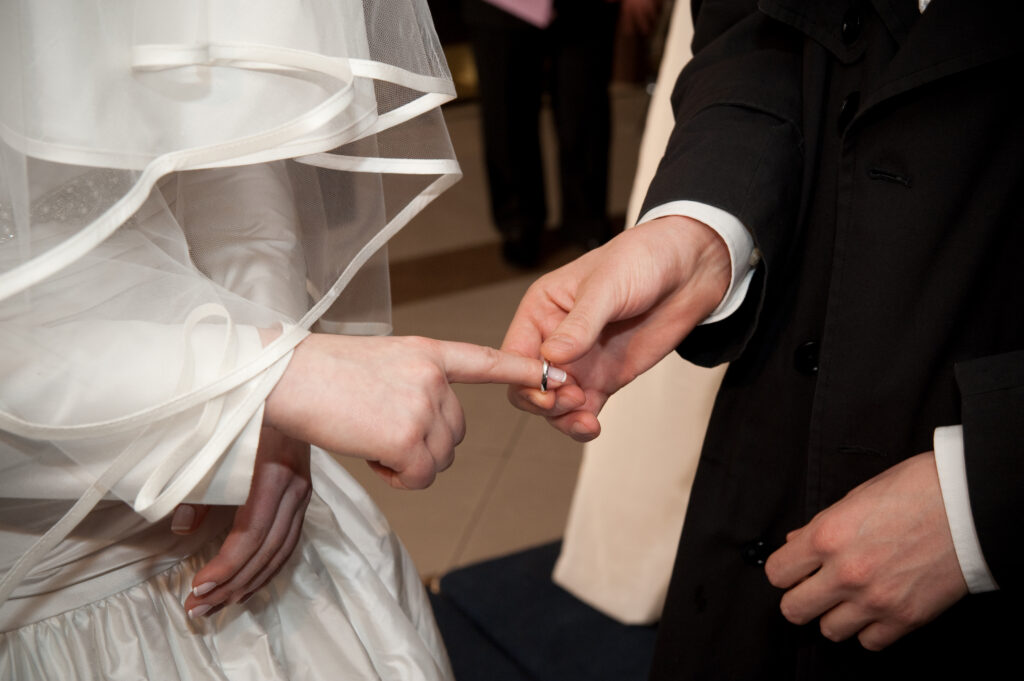
The bride’s ring is generally made of gold and must be round and without engraving or precious stones, so that its value may not be misrepresented or misinterpreted. It is crucial that the ring be owned by the groom at the time of the wedding ceremony. The ring is placed on the bride’s right index finger. She shows it to the congregation to indicate that she willingly accepts it – not as a gift, but as a binding transaction. The Ketubah is then read aloud and given to the bride.
Nissu’in: The second part of the ceremony is called the Nissu’in and is made up of Seven Blessings said over a second cup of wine (or grape juice). The first blessing refers to the wine. The second blesses God, who created the world. The third refers to the creation of man. The fourth celebrates the act of Divine Providence that has brought this couple together. The fifth is the belief in God’s Restoration of Zion and Jerusalem. The sixth thanks God for the personal joy of the groom and bride. The seventh and final blessing is a song of praise to God for granting the groom and bride happiness which is wished upon them for always.
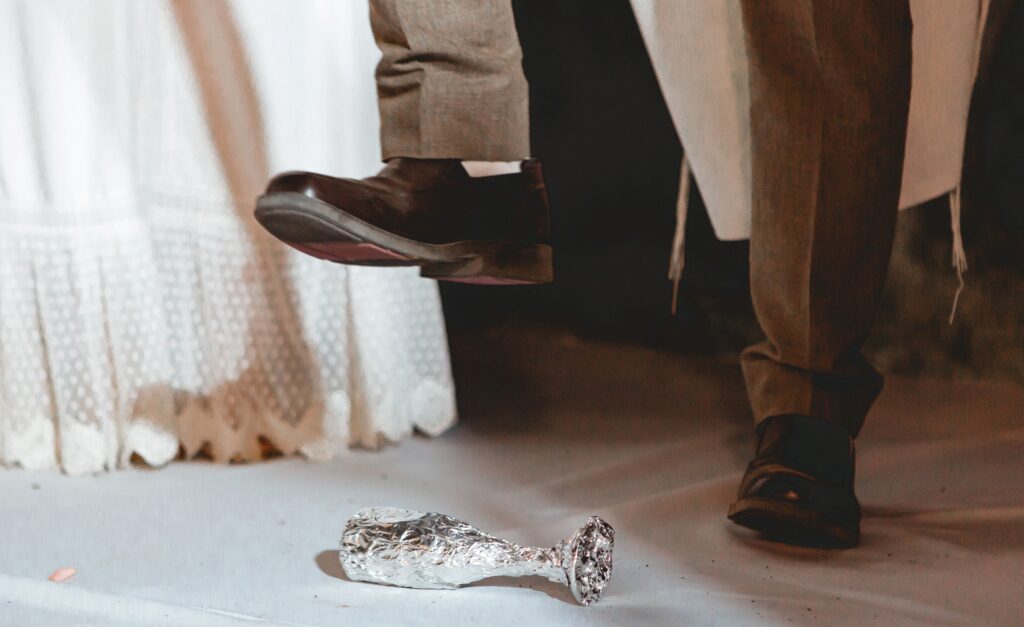
Breaking of the Glass: One of the most well-known elements of a Jewish wedding is the breaking of the glass at the end of the ceremony, which has a variety of explanations. One is that the shattering ushers in the outbreak of merriment that should immediately follow the pronouncement. Guests usually respond with “Mazal Tov!” (“Congratulations!”). Another explanation is that the breaking recalls the destruction of the Temple in Jerusalem. Even at the height of personal joy, sadness is remembered. The breaking also reminds us of the fragility of personal relationships. The glass is shattered with the implication that the marriage should always remain intact. Just as a broken glass cannot be mended, marriage is a transforming experience that forever changes the lives of the bride and groom. Finally, the breaking of the glass is also linked to a happy life together – each shard of glass represents a year of happiness.
Yichud: Yichud is a short time of seclusion immediately following the marriage so that the bride and groom will spend their first few moments as a married couple alone. Because of this, receiving lines are not a traditional part of Jewish weddings.
Simcha (Reception): At a Jewish wedding, simcha refers to a post-ceremony party whose purpose is to heighten the jubilation of the bride and groom. In Orthodox traditions, the party lasts for seven days.